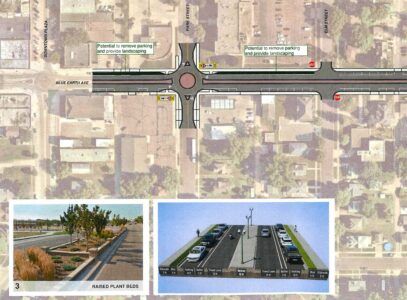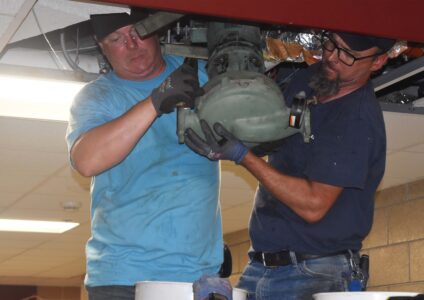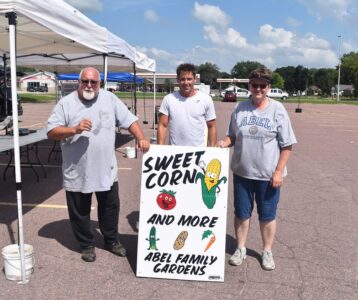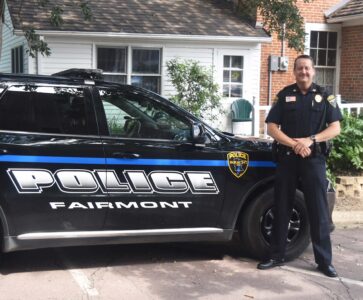Traffic signals, two-way stops or roundabouts?
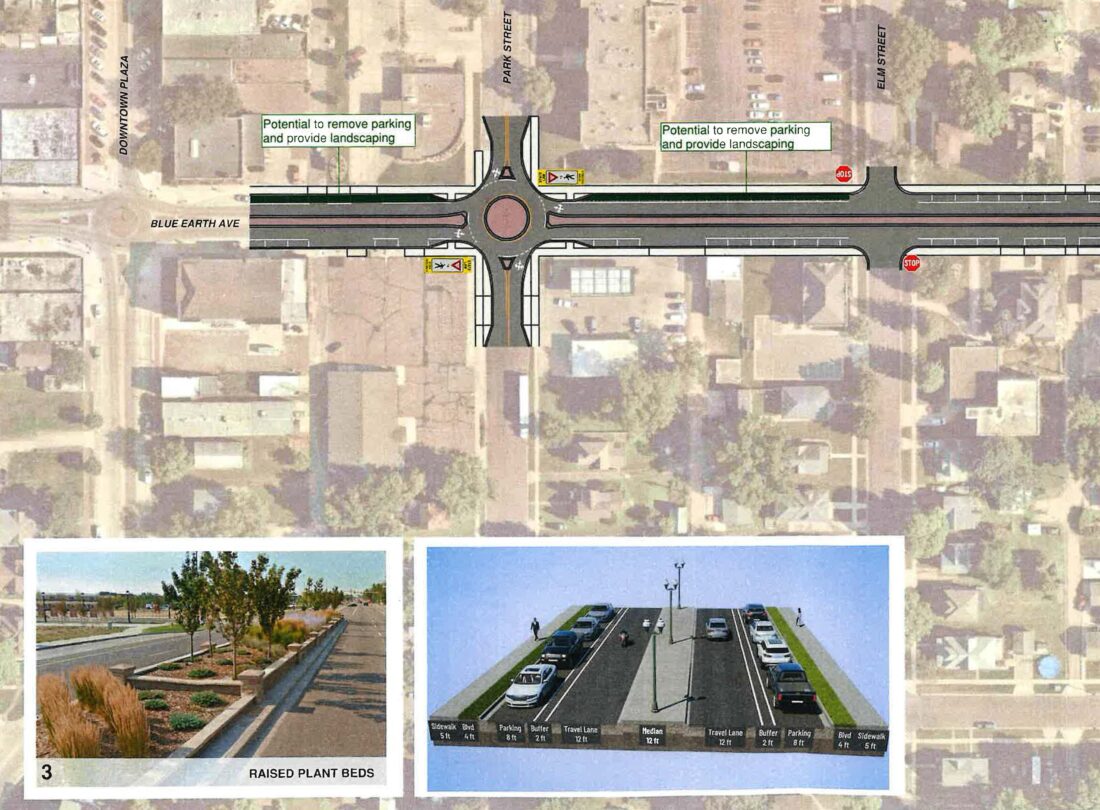
ABOVE: A potential design, “layout 3- mini roundabouts” that the Fairmont City Council is considering for Blue Earth Avenue. The council reviewed this design and several others during a special meeting on Monday. Photo courtesy of Bolton and Menk.
FAIRMONT– The Fairmont City Council held a special meeting on Monday to review and discuss options for the Blue Earth Avenue design project.
The city began talking about ideas for the project in February of this year after a traffic study was presented to it. As a mill and overlay is scheduled to take place in the summer of 2026, the city believes now would be the time to incorporate some improvements along the popular street, from east of Downtown Plaza to Trunk Highway 15.
In early May, the city and its engineer on the project, Bolton and Menk, launched a survey that the public could fill out and share its thoughts on the project and what it would like to see. The results were collected and presented to the council in June.
On Monday, several key individuals presented different aspects of the project to the council.
Interim City Administrator, Jeff O’Neill, said, “This is a generational investment in your historic gateway to your community…It’s a once in a 30 year project. If you’re going to do anything different or enhance it, this is the best time to do it because the road will be opened up and you’ll have the opportunity to make changes efficiently.”
Community Development Director, Pat Oman, then talked about some grant opportunities for the project, including the Small Cities Development Grant, which could be used for funding improvements to housing along the corridor. It could also be for funding the local share of the Blue Earth Ave. improvements, providing more financial flexibility to enhance the right of way.
“The small cities development grant is only available to Fairmont because of your size. Much larger counties or cities could receive what’s called a direct influx of funding through a community development block grant,” Oman explained.
He said there’s potential to get $600,000 for a single project up to $1.4 million for a comprehensive project.
“The state looks at it from a big impact standpoint and that includes a short timeframe, about 30 months. But at the same time they’re looking for more comprehensive resources,” Oman said.
He went over some more of the eligible uses of the grant, including owner-occupied rehabilitation, rental housing and commercial building rehabilitation.
The city’s Finance Director, Paul Hoye, also went over more of the funding options that the city may have. This included bonding options, liquor store funds and street improvement reserve funds.
“We’ve been accumulating funds for awhile and have a decent amount there that would qualify for this project,” Hoye said. “We also have liquor store funds. We have been drawing down our liquor store funds over the last few years so we don’t have quite as much in there as we have in the past.”
He said while previously those funds have been reserved for park and rec projects, as well as one time projects, some funds could be used for this project as there is no restriction on the use of those funds.
Troy Nemmers, an engineer with Bolton and Menk, spoke more in depth about some of the layout plans that are in consideration. He specifically led with mobility and safety upgrades planned for the corridor.
“Jeff referenced earlier about the four lane to three lane conversion and why we would do that, looking at the safety improvements that follow from that type of conversion,” Nemmers said.
He said another piece of the project is addressing the intersections. He referenced the traffic study that was completed earlier and presented to the council in February of this year which looked at both two-way stop control and mini roundabouts.
“We talked about traffic signals a little bit and the existing signals that are in place and the potential replacement of those at Park and Prairie…. As a reminder… the traffic signals and four-way stops were not warranted based on the traffic volumes that were located at those intersections,” Nemmers said.
He briefly walked the council through four different layout options. Option one includes a base design. Option two has turn lane options, which includes the potential option for medians, and option three has mini roundabouts and medians along the whole corridor. Option four has a roundabout hybrid.
“These four layouts are really just examples of what can be done. They can be any combination,” Nemmers said.
O’Neill also went over some current conditions of the road now and where there is potential to improve upon it. He spoke about opportunities to beautify the space, which has been discussed previously by council but has been received with some skepticism by the community.
“I think that this area of town is an opportunity to communicate confidence and commitment to the future and I think you can make a physical statement of belief in Fairmont’s future,” O’Neill said.
He said that following discussion, council was going to be given a survey document so that it could share with staff what it would like to see done.
Public Works Director, Matthew York, offered to answer some of council’s questions.
“As we work through this, a lot of these decisions are going to be made based upon the law and what the law needs to read out as,” York said.
Council Member Britney Kawecki said pedestrian safety is a priority for everyone. She asked about bumps outs to slow down traffic on Elm Street and Blue Earth Avenue and was told that bump outs will likely be included.
“I think right now we’re looking at the big picture of do we want medians, do we want roundabouts, do we want traffic signals. Pedestrians will be addressed at every intersection in the project,” Nemmers said.
Kawecki said that medians have been a concerns in a lot of the received feedback. She said that from what she understands, maintenance concerns have been addressed.
Council Member Jamie Kotwea asked what the cost would be for a traffic light. York said the cost for one light at one intersection would be around $600,000 to $800,000. He then asked which option would be safest for all types of traffic.
Jennifer McCoy, an engineer with Bolton and Menk who had presented the traffic study, said a roundabout would be the safest option.
“A roundabout has about 75 percent less conflict than an all-way stop or traffic signal,” McCoy said.
Kotewa also asked about the timeline for the project. York said that they will likely go out for bid around the first of the new year. After state approval comes in, construction is expected to start next summer.
Council Member Jay Maynard said he had concerns about medians, not because of visibility or maintenance but because of the potential tp cut off left turn movements.
“If we did the roundabout but didn’t do the media, would that work?” Maynard asked.
York said that would be an option. He echoed Nemmer’s earlier statement that the council can pick and choose a combination of what it wants to see.
“We really just need to see what direction we want to go so we can start pushing in that direction,” York said.
Council Member Randy Lubenow said, “Whatever we do, it’s going to be here for 20, 30, 40 years before we do it again so we need to look at not just building it, but how we’re going to maintain it.”

